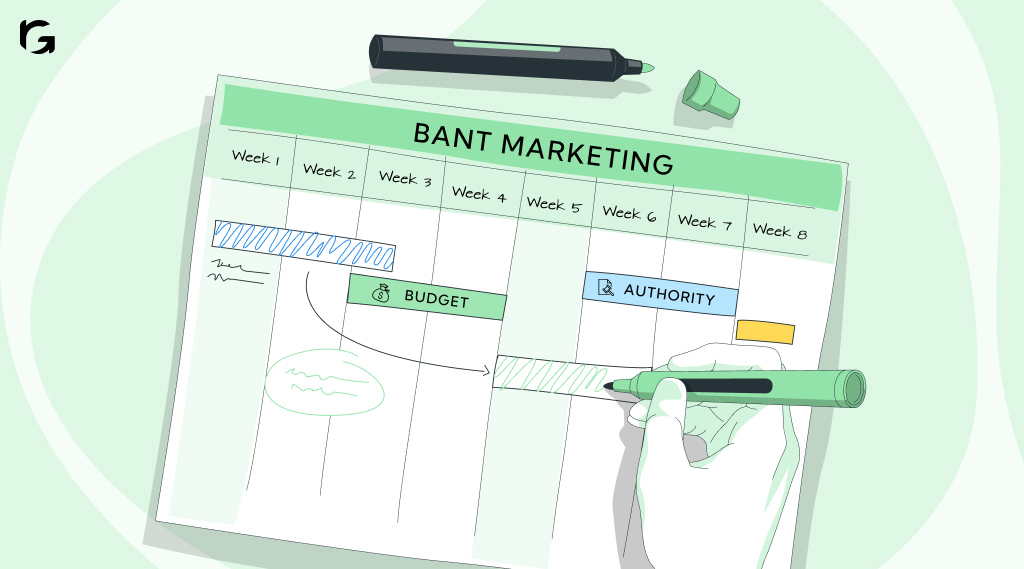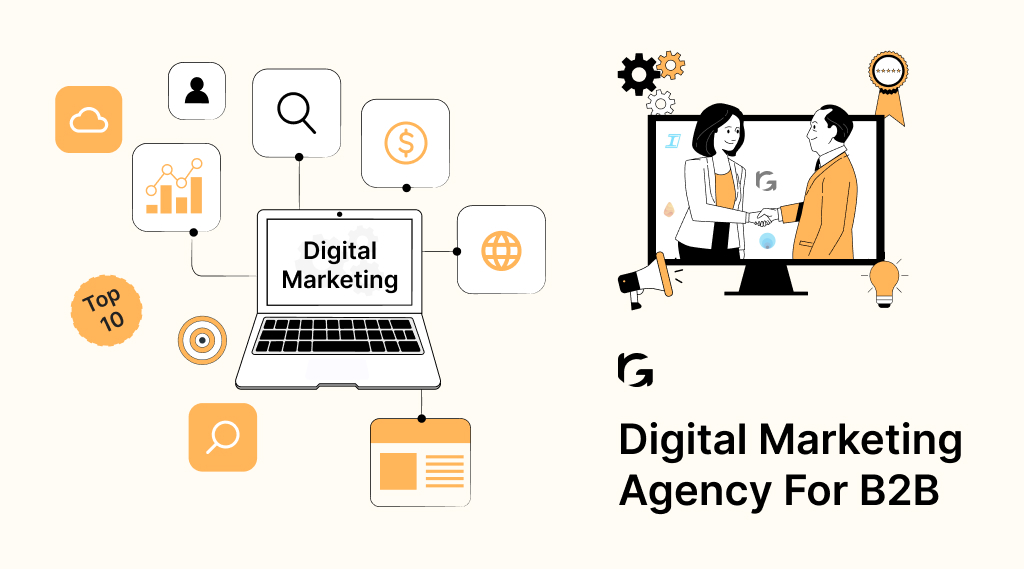Introduction
BANT marketing is a widely used approach in sales and marketing – it focuses on four key criteria: budget, authority, need, and timeline. This methodology empowers businesses to effectively qualify leads by understanding their financial capabilities, decision-making power, specific needs, and urgency.
However, considering the limitations of BANT, businesses are exploring alternative methodologies that offer more comprehensive insights and adaptability in dynamic market scenarios. So, in this post, we will learn about the concept of BANT and where it falls short. Also, discuss some of the alternatives that you may try to overcome the BANT limitations.
What is BANT marketing?
BANT marketing is a sales approach that helps businesses qualify potential customers based on four criteria: budget, authority, need, and timeline. It involves asking questions to understand a lead’s financial resources, decision-making power, specific requirements, and urgency. By focusing on these aspects, sales teams can prioritize high-potential prospects and tailor their offerings accordingly.
BANT aims to streamline the sales process by ensuring that resources are allocated effectively to leads with a higher likelihood of conversion. It’s a strategy used to identify and target qualified leads, ultimately leading to more efficient sales and marketing efforts.
1. Budget
The first aspect of a budget is the budget. This refers to the financial resources a lead has available to invest in your product or service. Understanding the budget helps sales teams tailor their offerings to match what the lead can afford. Strategies for addressing the budget component include:
- Qualifying Questions: Ask direct questions about the lead’s budget during initial conversations to gauge their financial capabilities.
- Offer Flexible Pricing: Provide options that fit different budget ranges, such as tiered pricing or customizable packages.
- Highlight Value: Emphasize the value proposition of your product or service to justify the investment within the lead’s budget constraints.
2. Authority
Authority refers to the decision-making power a lead has with them. It’s crucial to identify key decision-makers early in the sales process to streamline communication and decision-making. Here are strategies for dealing with the authority component:
- Identify Decision Makers: Ask about the lead’s role in the decision-making process and inquire about other stakeholders involved.
- Customize Communication: Tailor your communication style and content based on the authority level of the lead, whether they are a decision-maker or an influencer.
- Provide Educational Content: Offer resources and information that help decision-makers understand the value and benefits of your offering.
3. Need
Understanding the specific needs and pain points of a lead is fundamental in BANT marketing. By addressing their needs effectively, you can position your product or service as a valuable solution. Strategies for addressing the need component include:
- Ask probing questions: Dive deep into the lead’s challenges and requirements to uncover their specific needs.
- Offer Solutions: Present your product or service as a solution that directly addresses the identified needs of the lead.
- Provide Case Studies: Share success stories and case studies that demonstrate how your offering has successfully met similar needs for other clients.
4. Timeline
The timeline component refers to the lead’s urgency or timeframe for making a decision or implementing a solution. Understanding the timeline helps prioritize leads and allocate resources efficiently. Strategies for addressing the timeline component include:
- Clarify expectations: Discuss timelines and expectations early in the sales process to align with the lead’s schedule.
- Offer incentives: Provide incentives or discounts for leads willing to commit within a specific timeframe.
- Follow up strategically: Maintain regular communication and follow-ups based on the lead’s timeline preferences without being overly pushy.
7 Key benefits of BANT
The BANT framework offers numerous benefits for businesses looking to improve their sales and marketing strategies. Here are a few of them:
1. Qualifying leads
BANT Marketing excels at helping businesses qualify leads based on specific criteria. By assessing a lead’s budget, authority, need, and timeline, sales teams can prioritize high-potential prospects and allocate resources efficiently.
2. Focused resource allocation
One of the key advantages of BANT is its ability to focus resources where they matter most. By identifying leads that align with the company’s target audience and have the potential for conversion, organizations can streamline their marketing and sales efforts.
3. Shortened sales cycles
Efficient lead qualification through BANT can lead to shortened sales cycles. By understanding the prospect’s budget, decision-making authority, immediate needs, and timeline, sales teams can tailor their approach to accelerate the sales process.
4. Improved communication
BANT encourages effective communication between sales teams and prospects. By addressing specific needs and timelines, sales professionals can engage in meaningful conversations that resonate with the prospect’s priorities.
5. Increased sales productivity
By targeting qualified leads with a higher likelihood of conversion, BANT marketing boosts sales productivity. Sales teams can focus their efforts on leads that are more likely to result in successful deals, leading to improved overall performance.
6. Enhanced customer relationships
BANT emphasizes understanding the prospect’s needs and aligning solutions accordingly. This customer-centric approach promotes stronger relationships built on trust and mutual understanding, leading to long-term customer loyalty.
7. Boosted revenue
Ultimately, the benefits of BANT marketing culminate in boosted revenue. By prioritizing qualified leads, optimizing resource allocation, shortening sales cycles, improving communication, and promoting customer relationships, organizations can achieve higher sales volumes and increased profitability.
Where does BANT fall short?
While BANT marketing offers numerous benefits, it’s essential to acknowledge its limitations:
1. Lack of context
BANT criteria provide a structured framework for lead qualification but may overlook contextual nuances. Factors such as trends in the competitive market, and evolving customer needs may not be fully captured within the BANT framework.
2. Rigidity in criteria
The rigidity of BANT criteria can be restrictive in certain situations. Leads that do not neatly fit into the predefined budget, authority, need, or timeline categories may be overlooked, potentially missing out on valuable opportunities.
3. Limited focus on relationship building
BANT primarily focuses on immediate needs and timelines, sometimes at the expense of nurturing long-term relationships. Building rapport and trust with prospects may require a more holistic approach beyond the BANT criteria.
4. Incomplete picture of the customer journey
BANT marketing primarily addresses lead qualification but may not provide a comprehensive view of the customer journey. Understanding post-sale dynamics, customer satisfaction, and retention strategies may require additional frameworks.
7 Alternatives to BANT marketing
Besides opting for BANT, you can explore its alternatives that rule out its limitations. With these alternatives, you may also witness improvements in your overall lead qualification and conversion efforts:
1. MEDDIC (Metrics, Economic Buyer, Decision Criteria, Decision Process, Identify Pain, Champion):
MEDDIC focuses on understanding key metrics and economic factors driving the buying decision. It emphasizes identifying the economic buyer who has the authority and budget for the purchase. Decision criteria and process refer to the criteria and steps involved in making the decision. Identifying pain points helps tailor the solution to address specific challenges. A champion within the organization advocates for your solution and helps navigate the buying process.
2. MEDDPICC (Metrics, Economic Buyer, Decision Criteria, Decision Process, Paper Process, Identify Pain, Champion, Competition):
MEDDPICC expands on MEDDIC by adding considerations for the paper process (legal and procurement requirements) and competition analysis. This methodology ensures a thorough understanding of all aspects influencing the decision-making process and addresses potential obstacles related to contracts and competition.
3. FAINT (Funds, Authority, Interest, Need, Timing):
FAINT evaluates the prospect’s financial capability (funds), decision-making power (authority), engagement level (interest), specific requirements (need), and timeframe for purchase (timing). It helps prioritize leads based on their readiness to buy and ensures efficient use of sales resources.
4. ANUM (Authority, Need, Urgency, Money):
ANUM focuses on identifying the decision-making authority, understanding the prospect’s needs, assessing urgency, and determining the financial capacity to make the purchase. It emphasizes the importance of addressing urgent needs and aligning the solution with the prospect’s budget.
5. CHAMP (Challenges, Authority, Money, Prioritization):
CHAMP centers on uncovering the prospect’s challenges, identifying the decision-making authority, understanding budget constraints, and prioritizing solutions based on their impact on the prospect’s priorities. It helps tailor the sales approach to address specific challenges and align with the prospect’s strategic goals.
6. GPCTBA/C&I (Goals, Plans, Challenges, Timeline, Budget, Authority, Consequences, & Implications):
GPCTBA/C&I focuses on understanding the prospect’s goals, plans, and challenges, establishing a timeline for decision-making, assessing budget availability, identifying decision-making authority, and considering the consequences and implications of the decision. It provides a comprehensive framework for aligning the sales process with the prospect’s strategic objectives and addressing potential barriers to closing the deal.
7. SPIN Selling (Situation, Problem, Implication, Need-Payoff):
SPIN selling is a methodology developed by Neil Rackham that focuses on asking specific types of questions to uncover the prospect’s needs and pain points. It involves understanding the prospect’s situation (current state), identifying problems or challenges they are facing, exploring the implications of these problems, and highlighting the need-for-payoff or benefits of your solution. SPIN selling is effective for consultative selling and building a strong case for your product or service based on the prospect’s unique requirements and desired outcomes.
Conclusion
While BANT Marketing provides valuable insights, its limitations necessitate exploring alternative methodologies. MEDDIC, MEDDPICC, FAINT, ANUM, CHAMP, GPCTBA/C&I, and SPIN Selling offer versatile frameworks to qualify leads effectively, considering factors beyond budget and authority.
By adopting BANT marketing alternatives, businesses can improve lead prioritization, shorten sales cycles, and build lasting customer relationships. Each methodology brings unique strengths, enabling sales teams to align their strategies with prospect needs and navigate the sales process with agility.


